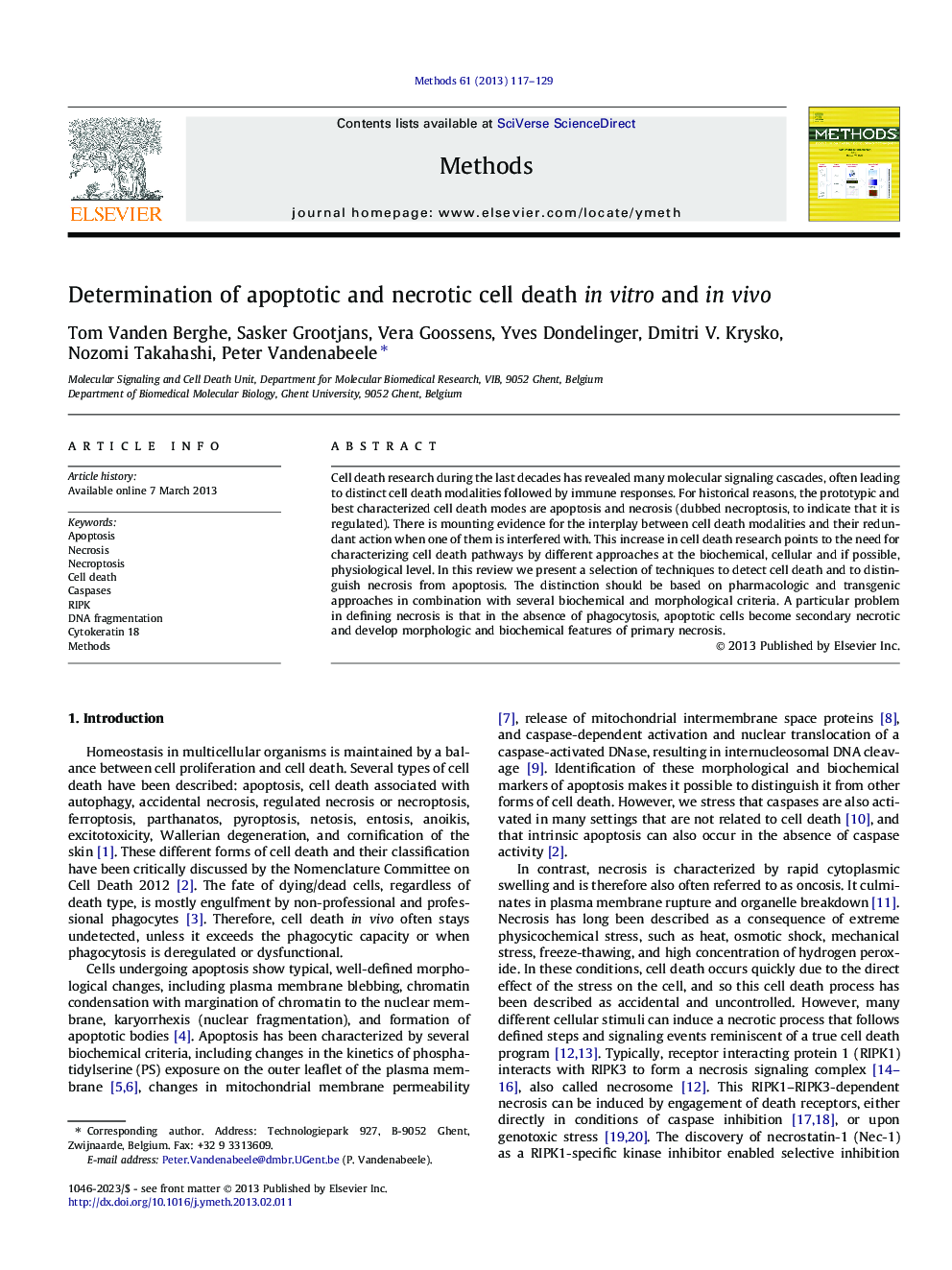| Article ID | Journal | Published Year | Pages | File Type |
|---|---|---|---|---|
| 10825955 | Methods | 2013 | 13 Pages |
Abstract
Cell death research during the last decades has revealed many molecular signaling cascades, often leading to distinct cell death modalities followed by immune responses. For historical reasons, the prototypic and best characterized cell death modes are apoptosis and necrosis (dubbed necroptosis, to indicate that it is regulated). There is mounting evidence for the interplay between cell death modalities and their redundant action when one of them is interfered with. This increase in cell death research points to the need for characterizing cell death pathways by different approaches at the biochemical, cellular and if possible, physiological level. In this review we present a selection of techniques to detect cell death and to distinguish necrosis from apoptosis. The distinction should be based on pharmacologic and transgenic approaches in combination with several biochemical and morphological criteria. A particular problem in defining necrosis is that in the absence of phagocytosis, apoptotic cells become secondary necrotic and develop morphologic and biochemical features of primary necrosis.
Related Topics
Life Sciences
Biochemistry, Genetics and Molecular Biology
Biochemistry
Authors
Tom Vanden Berghe, Sasker Grootjans, Vera Goossens, Yves Dondelinger, Dmitri V. Krysko, Nozomi Takahashi, Peter Vandenabeele,
